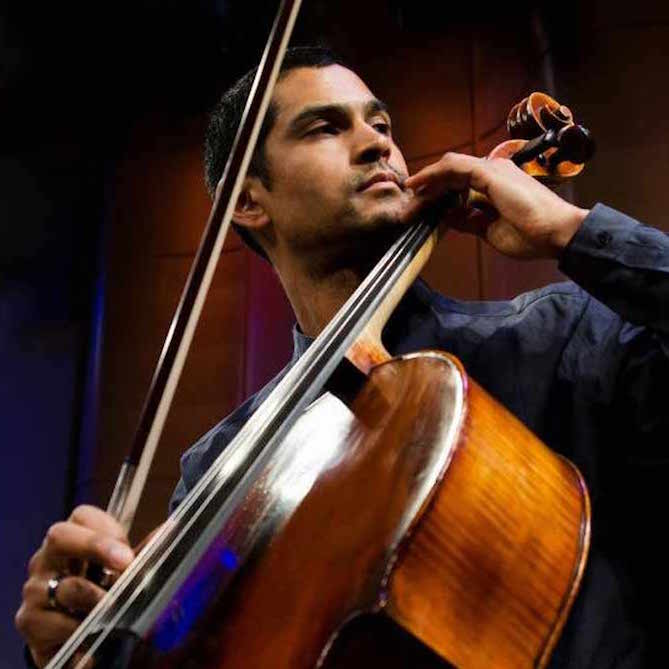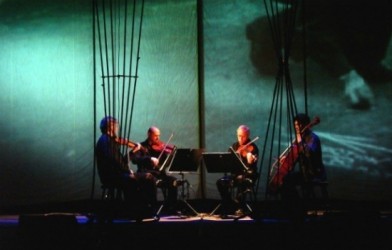
Tak-Sîm (Pt. 1)
Jeffrey Zeigler
In my next few blog posts I am going to take a temporary detour from our discussion regarding the K-Bow in order to talk about a new work that my quartet recently premiered in Paris at the Cité de la Musique. The piece is by Alireza Farhang, an Iranian composer currently residing in Paris. The work, entitled Tak-Sîm, was commissioned by IRCAM (the Institute for Research and Coordination in Acoustics and Music).
In past blogs I have spent a fair amount of time talking about the integration of technology and extended cello techniques into performance. My desire to discuss this piece comes from the fact that in my opinion this particular composition successfully integrates both concepts. In his own words, the composer’s objective was to transmit the intonation of Persian music into the instrumental parts as well as in the electronic elements. In order to do this he analyzed melodies played by a famous Iranian Setâr player, Ahmad Ebâdi, then he made a sort of harmonic structure into which the instrumental and electronic parts were both composed.
Here is a link to a video that shows much of the work that we did together in putting the piece together:
The above rehearsals were all done without the use of electronics. Although the use of technology is a large part of this type of work, I find that it is always important to have the opportunity to work with the composer in an acoustic setting in order to iron out any instrumental and ensemble issues. Without this time you run the risk of holding up future rehearsal time.
Alireza Farhang uses a petty hefty dose of electronics in this composition. In what way, do you ask? In his own words, about 90% of the work was written using the software OpenMusic. OpenMusic is an object-oriented visual programming environment based on CommonLisp/CLOS. It provides libraries and editors that make it a powerful environment for music composition. It can also be used for teaching functional and object programming. The colorful soundscape of the work is all synthesized sound that Farhang created using OMChroma, which is a library within the OpenMusic environment. Here is what they say on the OMChroma website:
OMChroma: High-level Control Structures for Sound Synthesis.
OMChroma is a compositonal framework integrated in OpenMusic adapted from composer Marco Stroppa’s Chroma system. OMChroma uses a matrix representations as control structures and provides powerful high-level procedures for the design and exploration of sound synthesis processes.
OMChroma is distributed as an external OM library by the IRCAM forum.
Participants / Contributors: Jean Bresson, Carlos Agon, Marco Stroppa (Musikhochschule Stuttgart), Serge Lemouton.
Using this software, there is some real time treatment of the instrumental sound. It’s sort of like sampling which is then transformed according to various parameters such as transposition or thickness of the texture. The sound designer has the possibility of working with these parameters while following along with the score.
And if things weren’t getting complex enough, we also used foot pedals in order to trigger soundscapes and to manipulate our sounds live. The sound files were triggered and controlled using the software Max/MSP. Max/MSP is a visual programming language for music and multimedia. I have performed a myriad of compositions that have used Max as it’s platform. This software is AMAZING because you can do virtually anything you want with it. The range of possibilities is absolutely astounding. That said, it is also infuriatingly squirrelly and I cannot tell you how many sound checks have come to a screeching halt because of a seemingly minute issue with the way a piece is set up within the software.
In my next blog post I will discuss some of the actual extended cello techniques that I used in performance and I will also discuss the premier itself.
Subjects: Repertoire

